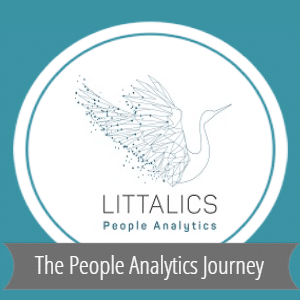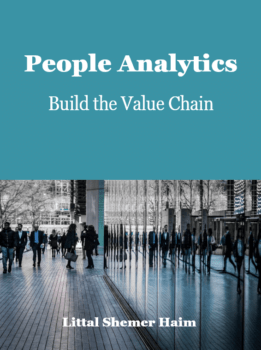I simulate working with a data scientist in my workshops for HR and People Analytics leaders. The audience contributes the domain expertise while I support them in a hypothetical project, offering the methodology and technical side. I discuss the analytics process from data exploration to hypothesis testing to conclusions, challenge the critical thinking skills of the audience, and explore some data fallacies. During such sessions, I face many questions about leveraging data science in HR.
In this article, I answer three critical questions: First, what should HR professionals expect when working with a data scientist? Secondly, what should HR professionals do for a successful data science project? Third, how should you deal with insignificant results in the analysis? These are critical because data literacy means beyond reading your dashboards and reports. It also means being proactive and leading the conversation with data professionals. It is the key to your success, creating impact through the data’s insights.
What should HR professionals expect when working with a data scientist?
Maybe you are thinking right now – I work with a data analyst, or I am a data analyst. Is there any difference between a data analyst and a data scientist? Though some role descriptions may overlap, a data analyst generally spends more time on routine analysis, providing reports regularly, and typically using BI tools or Excel. However, a data scientist may design how to integrate data from different sources, then manipulate, analyze, and sometimes productize it, leveraging advanced analytics and typically using programming languages like R.
The practice of data science is multidisciplinary. It encompasses three general skills – the business domain of expertise, statistical modeling, and programming. Therefore, a crucial part of your challenge in People Analytics is the effort to establish communication between professionals with different skills.
You heard a lot about the People Analytics journey that enables HR professionals to become more strategic because they speak the language of the business and impact using the right questions and insights derived from people’s data. But they can support decision-making only when they communicate those questions to data scientists.
What should HR professionals do for a successful data science project?
If there is one message I hope you would take from this article, this would be it: Make sure that the data scientist understands the business needs in workforce-related analysis. In addition, it would help if you articulated the right business questions so the research findings yield the best data storytelling you can leverage to impact.
Beyond that, let me shed some light on all data science projects’ processes while taking the data scientist’s perspective. First, you always start with a business question, sometimes titled research objectives. Then, based on a specific concern, goal, or challenge for the business, you create hypotheses about how human attitudes, behavior, or performance impact that key concern.
Only when you define what you need to measure to test your hypotheses can you source the data from any department that holds it. But then, you must ensure that there are no missing values in people’s information, typos that corrupt categorical variables, wrong labeling, duplicate records, neglected records that were not updated, or any other issues with messy data.
Then you reach the phase of Exploratory Data Analysis (briefly, EDA), which sometimes proceeds with selecting variables for prediction models and then modeling. These steps beyond EDA are called feature engineering and practical machine learning. We’ll skip these steps for now. Eventually, you communicate the results, focusing on actionable insights from the findings, and sometimes implement models into products.
As an HR professional, you have a crucial role in this process. The data scientists can’t maintain the data for you. Also, remember that while you may lack experience in data science, your data scientists may lack an understanding of people’s processes. Your responsibility is to ensure no gap between the analysis made for you and the business questions and actionable insights.
How should you deal with insignificant results in the analysis?
As I previously wrote, occasionally, findings are boring. There are cases in People Analytics where statistically insignificant results are the desired outcome. As with equal pay, sometimes organizational groups shouldn’t be significantly different. However, these insignificant results may only be the beginning of the exploration. You can always try to enrich your analysis and reveal additional insights.
For example, you can explore the interactions of variables. Multivariate statistics can raise new perspectives. You don’t have to go back to your notebooks of statistics fundamentals. Instead, ask a data scientist about interactions. So, if a comparison between groups does not reveal striking differences, adding a single variable to the analysis may uncover some hidden patterns.
From a data scientist’s point of view, I think your proactivity is invaluable. When you ask “why?”, suggest hypotheses, and challenge explanations, you leverage your domain expertise and complete the data scientist skills.







